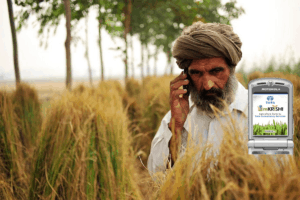DIGITAL FOOD SYSTEMS EVIDENCE CLEARING HOUSE

Implemented in:
Primary users:
Food system component(s):
Food system activity/ies:
Type(s) of digital intervention:
More information
https://tinyurl.com/yy6mea6uThe PRIDE™ (Progressive Rural Integrated Digital Enterprise) is a platform powered by the TCS mKRISHI® and designed to enhance the climatic and market resiliency of its farmer members while increasing their financial resiliency. For example, during the crop planning phase, the past, present and future information on the climate and market front are used to advise farmers on the best crops for the particular piece of land, among other services.
Description
The information is encapsulated in the AgriCrol™ (Agricultural Crop Protocol), a revolutionary repository of information which is completely personalized. By following the information in the AgriCrol™, the farmer is assured of significant climate and market resiliency which is further enhanced through aggregation facilitated by the PRIDE™, disease and pest detection, weather prediction and so on. As we come closer to harvest, various market resilient steps such as market linkages, post-processing, storage options are introduced which enable the farmer to become “climate-smart” and “market-smart”.
Estimated number of active users:
- At inception:
- At time of last report:
Evidence of impact
- Reduction in pesticides: 15%
- Reduction in fertilizer usage: 10%
- Average increase in yield – 48%
- Average increase in profitability: 45%
- Average increase in compliance to best practices: 75%
- Increase in rural employment




